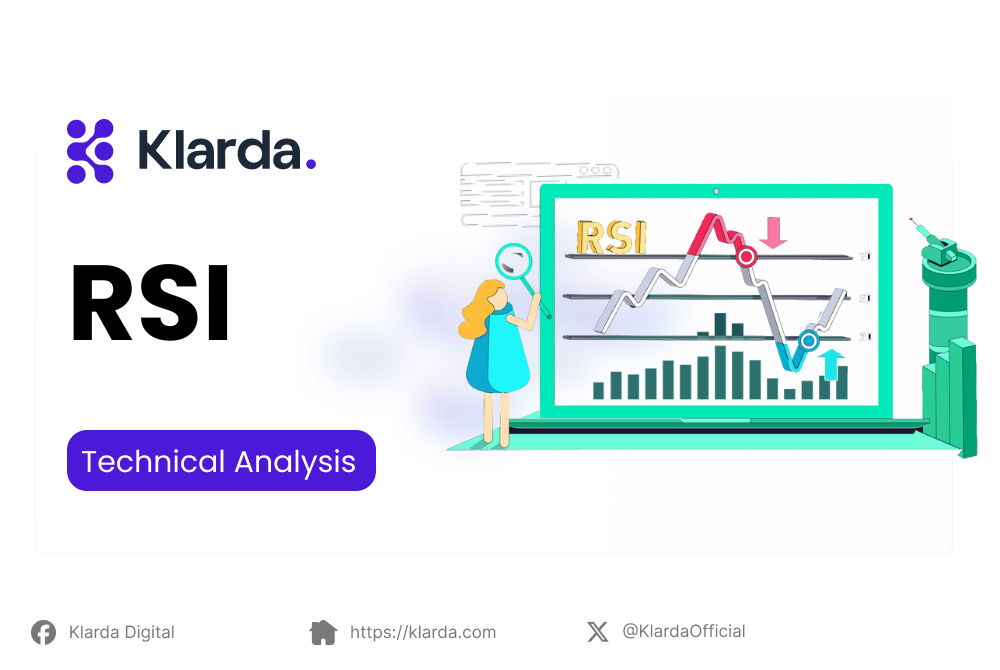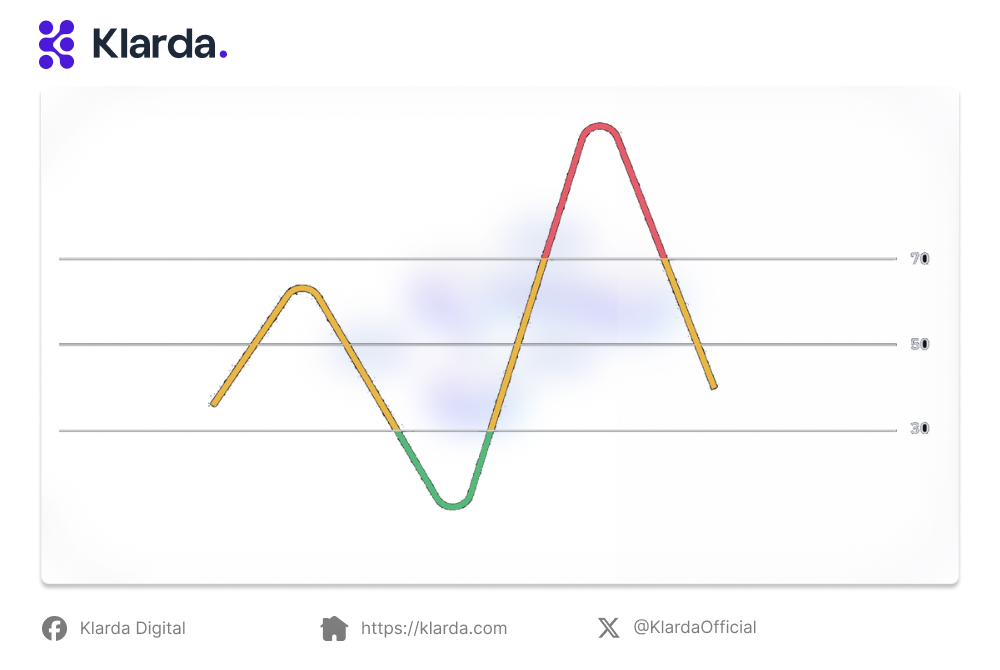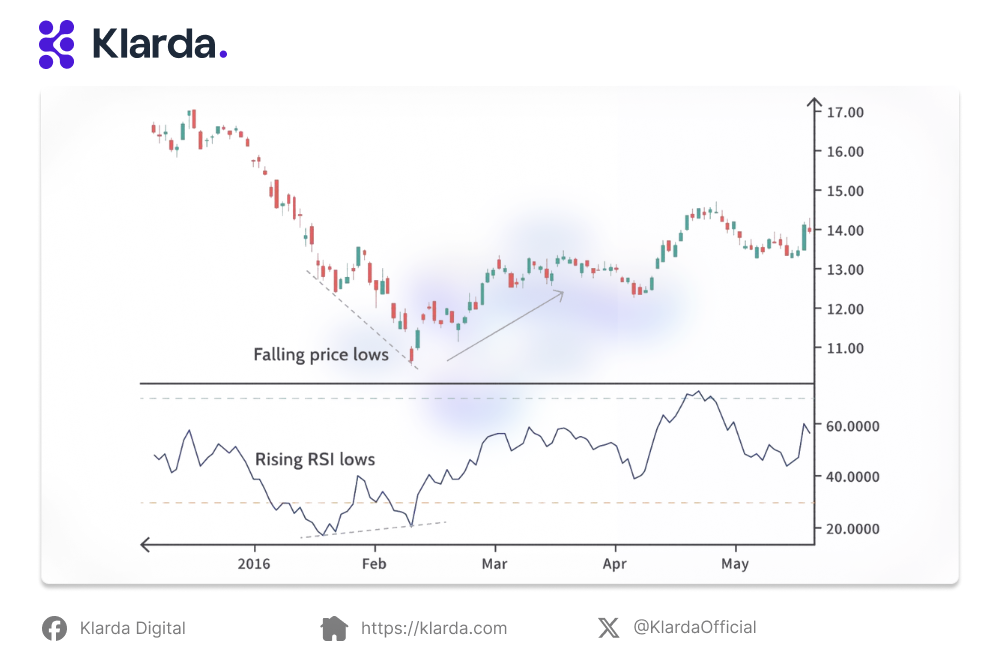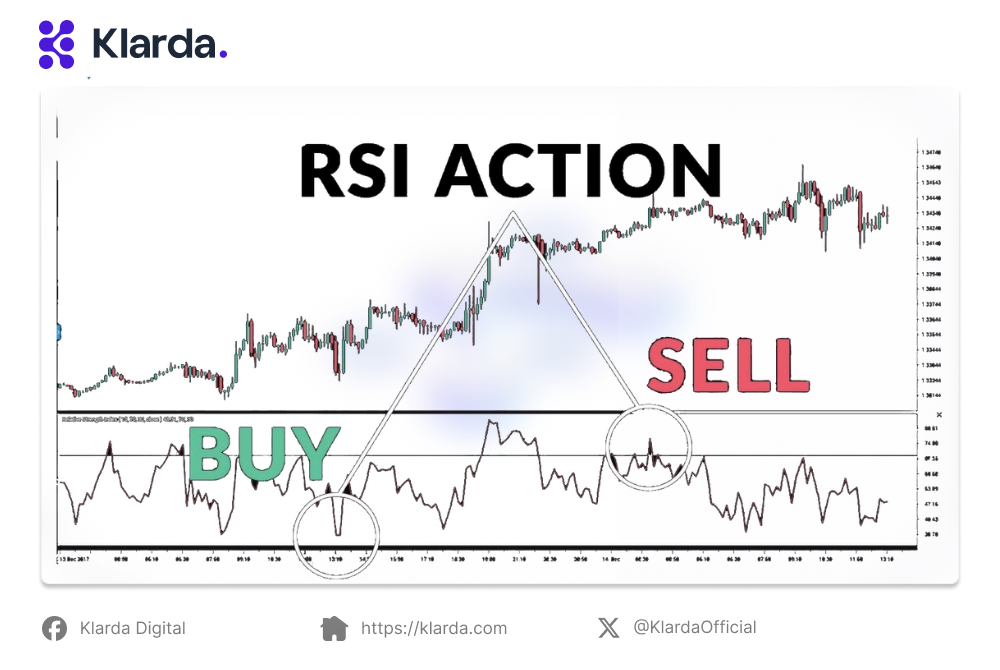RSI
Within technical indicators, the RSI indicator stands out as a guiding light providing insights into the overbought and oversold conditions of asset prices.
Among the arsenal of technical indicators, the RSI indicator emerges as a beacon, offering insights into overbought and oversold conditions in asset prices. Developed to measure the speed and change of price movements, the RSI has become a cornerstone for traders and analysts alike. This article embarks on a journey to unravel the intricacies of the RSI indicator and gain valuable insights into the RSI indicator's role in enhancing trading strategies and portfolio management.

KEY TAKEAWAYS
- Relative strength index (RSI) is a momentum oscillator widely employed in technical analysis to assess the overbought or oversold conditions of a financial asset.
- The advantages of the RSI lie in its simplicity and clear signals for overbought and oversold conditions.
- Bearish divergence RSI occurs when the price of an asset reaches new highs or lows, but the RSI fails to confirm.
- Traders use the RSI to identify overbought conditions when the indicator reading exceeds 70.
WHAT IS RSI INDICATOR?
Relative strength index (RSI) is a momentum oscillator widely employed in technical analysis to assess the overbought or oversold conditions of a financial asset. Developed by J. Welles Wilder in 1978, the RSI is known for its simplicity and effectiveness. It quantifies the speed and change of price movements by comparing the magnitude of recent gains to recent losses over a specified period.
RSI quantifies the speed and change of price movements by comparing the magnitude of recent gains to recent losses over a specified period. The key features of the RSI indicator lie in its scale ranging from 0 to 100, with readings above 70 indicating overbought conditions and readings below 30 suggesting oversold conditions.

RSI is a momentum oscillator widely employed in technical analysis to assess the overbought or oversold conditions of a financial asset
HOW DOES RSI WORK?
RSI is calculated using the following formula: RSI = 100 - 100/(1 + RS)
Where RS (Relative Strength) is the average of 'n' days' up closes divided by the average of 'n' days' down closes. The typical value for 'n' is 14, but it can be adjusted based on the trader's preference.
Traditionally, and according to Wilder, an asset is considered overbought when the RSI is above 70 and oversold when it is below 30. Overbought conditions may suggest that the asset's price has risen too far, too fast, and could be due for a pullback. Oversold conditions may indicate that the asset's price has fallen too much and might be poised for a rebound.
The strength of a buy or sell signal can depend on the level of RSI. For example, a strong uptrend may see RSI frequently reaching or exceeding 70, but this doesn't necessarily mean a reversal is imminent. Conversely, a strong downtrend may have RSI frequently dipping below 30 without an immediate reversal.
RSI INDICATOR VS. MACD INDICATOR
Similarity:
While both the MACD and RSI indicator are popular technical indicators, they share some similarities. Both belong to the category of momentum oscillators and are commonly used to identify overbought or oversold conditions. Additionally, traders often utilize both indicators to generate buy or sell signals based on specific conditions.
Difference:
Despite their shared purpose, the MACD and RSI differ in their underlying calculations and emphasis. The MACD primarily considers the convergence and divergence of moving averages, providing insights into trend strength and potential reversals. In contrast, the RSI focuses on the relative strength of gains versus losses over a specified period, offering a more direct measure of momentum.
The advantages of the RSI lie in its simplicity and clear signals for overbought and oversold conditions. Traders often appreciate its straightforward interpretation, making it accessible for both novice and experienced investors. The MACD, with its dual-line structure, excels in capturing both trends and potential reversals, providing a more comprehensive view of market momentum.

The advantages of the RSI lie in its simplicity and clear signals for overbought and oversold conditions
WHY USING RSI INDICATOR?
In practical terms, the RSI indicator finds application in various trading strategies. Here are some highlighted examples of how to use RSI indicator:
- Overbought and Oversold Conditions:
Traders use the RSI to identify overbought conditions when the indicator reading exceeds 70, suggesting a potential reversal or correction. Conversely, readings below 30 indicate oversold conditions, signaling a possible buying opportunity.
- Divergence Analysis:
Divergence RSI occurs when the price of an asset reaches new highs or lows, but the RSI fails to confirm. This can signal a potential weakening of the current trend and an impending reversal.
- Trend Confirmation:
Traders often use the RSI to confirm the strength of an existing trend. A rising RSI during an uptrend or a falling RSI during a downtrend can validate the robustness of the prevailing market direction.
- Signal Generation:
Buy and sell signals are generated based on RSI oscillations. For example, a trader might initiate a buy position when the RSI crosses above 30 after being in oversold territory, indicating a potential upward movement.
FAQ
What Occurs When RSI Is Elevated?
Given that the relative strength index is primarily utilized to ascertain whether a security is overbought or oversold, a high RSI reading suggests overbought conditions, potentially signaling an impending price decline.
Is it Advisable to Purchase When RSI Is Low?
For some traders, an RSI reading below 30 is considered a buy signal, indicating that the security may have been oversold and is primed for a potential rebound. However, the effectiveness of this signal hinges on the broader market context. In such cases, traders may opt to delay their buying decisions until other technical indicators validate the buy signal.

The relative strength index is primarily utilized to ascertain whether a security is overbought or oversold
In conclusion, the RSI indicator stands as a formidable tool in the toolkit of technical analysts, providing valuable insights into market conditions. Its historical roots, straightforward features, and applications in various trading strategies underscore its significance. Investors should approach technical analysis tools, including the stochastic RSI strategy, with a commitment to continuous learning and thorough investigation.
Updated 7 months ago